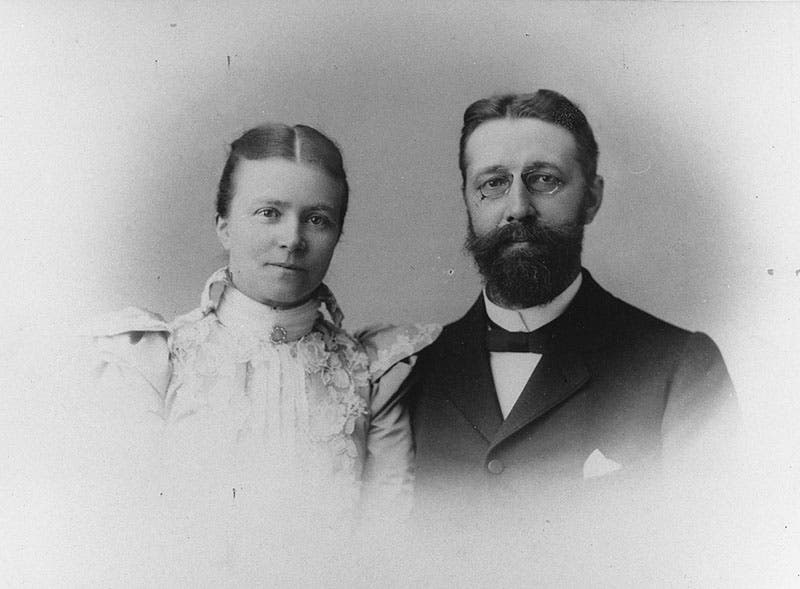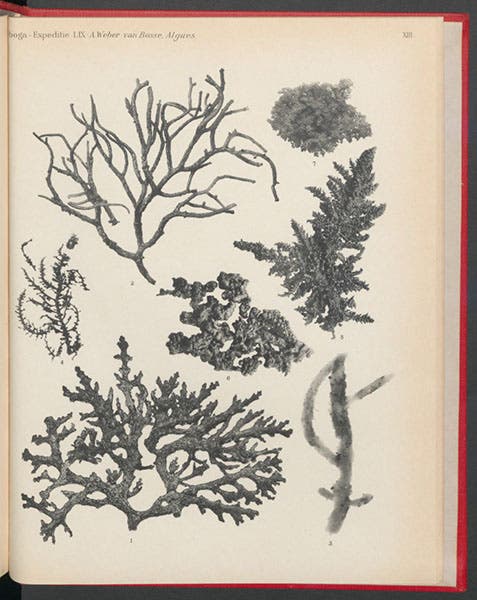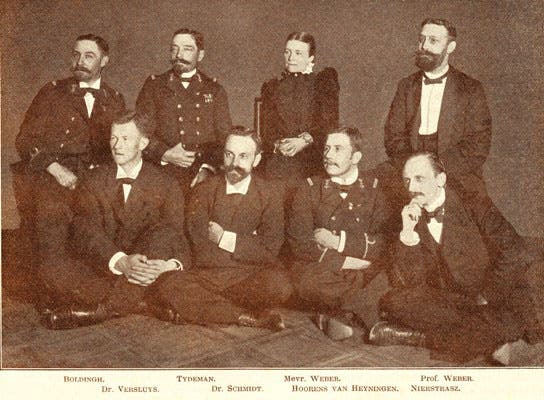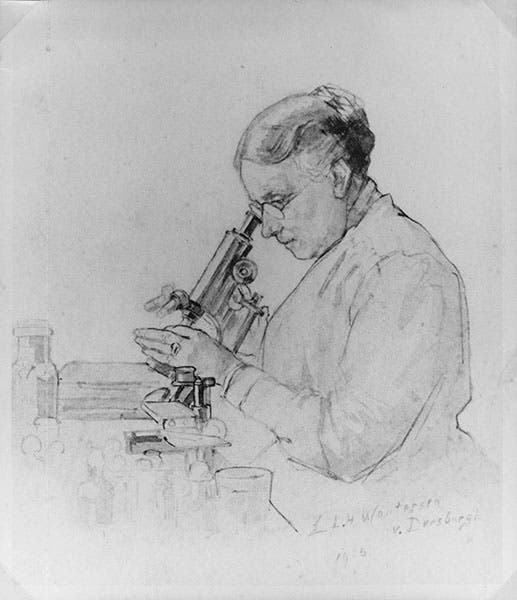Scientist of the Day - Anna Weber-van Bosse
Anna Antoinette Weber-van Bosse, a Dutch algologist (someone who studies algae), was born on March 27, 1852. She was one of the first women to take courses at the University of Amsterdam and is best known for her participation in the Siboga Expedition (1899-1900), a yearlong oceanographic voyage which studied the plant and animal life in the Dutch East Indies. The high caliber of her scientific work was recognized during her lifetime; in 1910 she was awarded an honorary doctorate, the first woman in the Netherlands to receive this honor. In addition to her work on the morphology and taxonomy of algae, she engaged in experimental botany as well – raising Caulerpa in aquaria while on the Siboga expedition and dreaming of transplanting them on various parts of the reefs to observe how they functioned. Significantly, Weber-van Bosse was a central figure in adding a botanical perspective to the scientific understanding of coral reefs as living ecosystems. Like many women scientists of this era, she engaged in many firsts, helped other women scientists, and is little known.
Anna van Bosse was the youngest of five children born to Jacob Theodoor van Bosse (1811-1894) and Jacqueline Jeanne Reynvaan (1813-1856). The van Bosse’s were a patrician family and lived in central Amsterdam; van Bosse’s father owned a shipping insurance company. Her mother died when she was only three years old, leaving her older sister and a Swiss governess to raise her. Educated by her governess, she often visited the Artis Zoo, and showed an interest in the plants and animals in the aquaria. At the age of 19, she married the wealthy industrialist Wilhem Ferdinand Willink van Collen. A year later, she began studying botany with a high school teacher, Jan. C. Costerus. Willink van Collen passed away in 1878, leaving van Bosse a young widow.
In 1880, van Bosse began attending biology courses at the University of Amsterdam. She took courses with botanist C.A.J.A Oudemans (1825-1906) and plant physiologist Hugo de Vries (1848-1935), who would later become one of the discoverers of Gregor Mendel’s laws of heredity. The women students (all three of them) were allowed to attend the lectures, but they had to wait until the professor entered the room to join and had to complete the laboratory work in a room separate from the male students. At the University of Amsterdam, van Bosse met a newly hired professor of comparative anatomy, Max Wilhelm Carl Weber, and they married in 1883. Their marriage would provide Van Bosse an acceptable avenue of making a scientific career (second image).
Weber-van Bosse’s career had an auspicious start: her second paper, published in 1887, was awarded a gold medal from the Dutch Association for Sciences. The subject, unicellular algae that lived on sloth fur, demonstrated her interest in algae species that lived intimately with other species. She continued studying species living together: on her first trip to the Dutch East Indies in 1888-1889, she described three new species-pairings. Together with Max Weber, she returned to the East Indies in 1899, this time for a year-long expedition aboard the HM Siboga. Weber-van Bosse acted as botanist for the expedition, making her the first female scientist to be included in the official scientific staff on an oceanographic expedition. On the Siboga expedition, she studied the marine flora, and paid special attention to Caulerpa (a green marine algae) and coralline algae (algae that forms a hard, calcareous crust like coral). During this expedition, Weber-van Bosse discovered the magnitude of reefs formed by coralline algae in the region, adding to the botanical understanding of plant life on reefs.
Publishing the material from the Siboga Expedition became the life's work of Weber-van Bosse and Weber. Based out of their home in Eerbeek, the scientists managed the publication of the scientific reports on the collections of Southeast Asian flora and fauna made during the Siboga expedition. Weber-van Bosse wrote the monograph on coralline algae (fourth image), as well as two other monographs, and assisted Weber in managing the entirety of the publications, authored by experts from around the world. She also wrote a popular account of the expedition, intended to provide a look into the daily life of the scientific expedition, complete with successes and mishaps.
Weber-van Bosse and Weber remained in Eerbeek for the remainder of their lives, studying in their home laboratories and hosting visiting scientist friends from Europe, India, and the United States. Weber-van Bosse was keen to aid other women scientists, and diligently corresponded with many other algologists and their students. Many of these algologists would visit the Weber’s in Eerbeek, which became known as the “botanical capital of Holland.”
Weber-van Bosse passed away in 1942, at the age of 90. Her work on marine algae, along with her support of other women scientists, make her an important scientific figure and role model for science.
Emily Hutcheson is a PhD Candidate in the History of Science at the University of Wisconsin-Madison and a former fellow at the Linda Hall Library. Comments and corrections are welcome; please contact Emily at hutcheson2@wisc.edu.










![Columbine, hand-colored woodcut, [Gart der Gesundheit], printed by Peter Schoeffer, Mainz, chap. 162, 1485 (Linda Hall Library)](https://assets-us-01.kc-usercontent.com:443/9dd25524-761a-000d-d79f-86a5086d4774/3829b99e-a030-4a36-8bdd-27295454c30c/gart1.jpg?w=210&h=210&auto=format&fit=crop)
